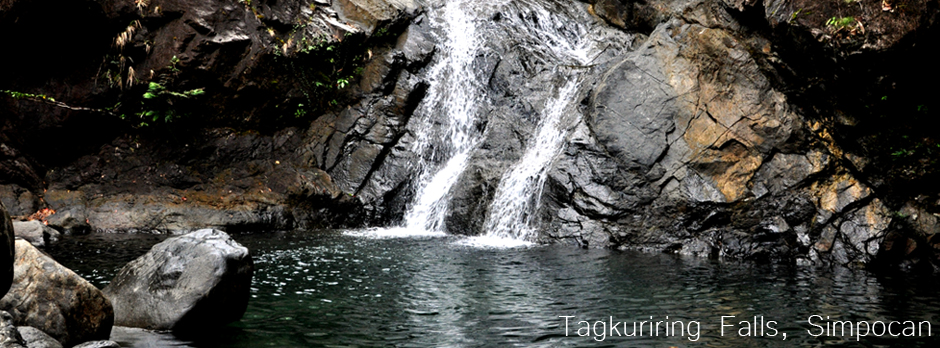CLICK HERE! For Electronic Services and Online Payment

Puerto Princesa’s vast land area and its rich terrestrial and marine resources have become like magnets that attracted a lot of in-migration from all over the country. They came in droves and squatted in public and private lands whose owners either did not care or know. Majority of them, being fishermen, chose the coastal areas for being closest to their source of income. This went on unabated for many years.
Locate. Identify. Register. This is what the City Government under Mayor Edward S. Hagedorn did to understand the magnitude of the problem of homelessness in the city. After having instituted measures to arrest further squattering, the next necessary step was to find suitable relocation sites, source funding for land acquisition, site development, and housing construction.
Of the 9,500 squatter families so far surveyed in the city, 7,980 or 84% live along the coastal areas of Puerto Princesa Bay, Honda Bay, and Ulugan Bay. And collectively, they have become the greatest polluters of the city’s three most important bays.
That is why when Mayor Edward S. Hagedorn first assumed the mayoralty post in July 1992, the problem of homelessness is one major concern. He pursued a comprehensive approach. Through the City Housing Office that the Mayor Hagedorn formally created on 23 October 1992, a thorough census was conducted to locate, identify and register all squatters, especially those living along the coastlines. As a result of the census listing, the City Government was able to determine who, where, and how many are the city squatters.
Having mapped-out all the squatters in the city, strict measures were immediately adopted and implemented to arrest further squattering. This was primarily done through a simple yet highly effective approach: faithful implementation of the “no building permit – no construction” law. The Council Against Squatting Syndicates and Professional Squatters (CASSAPS) and its implementing arm, the Anti-Squatting Task Force, were established for this purpose. Any and all construction, including those of stilt and “temporary” houses, that had no construction permit from City Hall were stopped and/or demolished.
Then the next necessary step was to fund and construct low-cost but decent housing for relocation. The Sicsican Housing Project at Brgy. Sicsican that is totally funded by the City Government is the beginning of the process. Tired of waiting for the promised housing assistance by the National Housing Authority, the City Government took it upon itself to purchase a 5.4-hectare land in Brgy. Sicsican and single-handedly develop it into a low-cost subdivision. There, 150 single-detached houses were constructed, 170 developed home lots were awarded, and the construction of 110 row houses has just been completed. The project has since become home to 430 families, relocating an equivalent number of erstwhile coastal squatter families.
The project was initiated by Mayor Hagedorn in line with his promise to make Puerto Princesa the country’s model city in kalinisan (cleanliness), katahimikan (peace and order), and kaunlaran (sustainable development). It is also part of the Mayor’s pledge to make no Puerto Princesan homeless or squatter in their own country.
The Key Aspects of the Project – The following are the key aspects of the project:
- Understanding the magnitude of the problem through census and mapping-up activities;
- Effectively putting a stop to further squattering through the strict implementation of the “no building permit – no construction” law, and the establishment of the Council Against Squatting Syndicates and Professional Squatters (CASSAPS) and its implementing arm, the Anti-Squatting Task Force, for this purpose;
- Fund-sourcing for the purchase of relocation lands, site development and housing construction;
- Preparation and approval process of subdivision plans;
- Site development and actual construction of housing units;
- Final screening of beneficiaries;
- Awarding
The Funding of the Project – Hereunder are the completed and ongoing housing projects of Puerto Princesa City and their sources of funding:
Brgy. Sicsican Housing Project, Phase I to III- This is wholly funded under the 20% Development Fund of the City Mayor (20% Development Fund).
Brgy.Mangingisda Housing Project – Phase I which involved the site development of 21.6 hectares was funded by a grant from the National Housing Authority. Phase II, involving the site development of 43.1 hectares and the construction of 1,030 units of duplex housing is funded from part of the proceeds of the Municipal Bond Flotation (Green Bonds).
VISAPA Housing Project- The purchase of this 9.0-hectare land was funded under the 20%Development fund of the City Mayor. Site development and housing construction are funded from the proceeds of a Municipal Bond Flotation that was wholly taken out by Pag-IBIG, a government financed corporation.
Golden Valley Subdivision- The purchase of the 8.2-hectare land and its site development were funded under the 20% Development Fund of the City Mayor.
PNS Teachers Village- Funding for the land purchase of this 6.8-hectare project came from the National Home Mortgage Finance Corporation (NHMFC). Site development was undertaken under the 20% Development Fund.
San Jose Lomanang Project- Purchase of the 3.0-hectare land was funded under the 20% Development Fund. Its site development is being jointly funded under the Presidential Poverty Alleviation Fund and the 20% Development fund.
San Jose Abordo Project- Land purchase of this 3.5-hectare project is being jointly funded by the National Housing Authority (NHA) and the 20% Development Fund. Site development is funded under the 20% Development Fund.
San Jose Russell Project (Employees’Village)- Purchase of 5.0-hectare land and its site development are funded under the 20% Development Fund.
Saint Mary Subdivision- Purchase of the 6.5-hectare land was funded by the NHMFC. Site development under the 20% Development Fund.
Green Valley Project- Purchase of the 2.6-hectare land financed by Pag-IBIG. Site development undertaken under the 20% Development Fund.
PPA Relocation Project, San Manuel- Purchase and site development of this 3.3-hectare land under the 20% Development Fund.
Typoco Village - The 2.5-hectare land was donated by Mr.Jesus Typoco. Site development under the 20% Development Fund.
Ellenview Subdivision- Purchase of the 1.0-hectare land financed by the NHMFC. Site development under the 20% Development Fund.
Jacana Project- Purchase and site development of this 2.1-hectare project under the 20% Development Fund.
Tagburos Projects (Alvarez and Magay)- Funding for the purchase and site development of these 5.5 and 3.3-hectare projects are under the 20% Development Fund.
Brgy.Princesa Project- Upon the fervent appeals of the 12 families who were facing eviction by orders of the court, the City Government purchased the 1,600 square meters of land they were occupying right in the heart of the city that was owned by the Philippine National Bank. The Purchase and site development (particularly the conduct of surveys, preparation of subdivision plan and titling) were funded under the 20% Development Fund.
Sta.Cruz Project- The site development of this half-hectare land donated by a private individual as relocation site for squatters in a neighboring barangay was undertaken under the 20% Development Fund.
Melwang Project- The purchase and site development of this 1.3-hectare land was undertaken under the 20% Development Fund.
Bahile Habitat Project- The purchase and site development of this 1.3-hectare project are financed under the 20% Development Fund. The construction of the housing units is to be undertaken by the Habitat Foundation and the Rotary Club of Makati-Jose P. Rizal.
Bahile Tribal Village Project- The purchase and site development of this 6.0-hectare project are undertaken under the 20% Development Fund.
Bahile Pier Project- The purchase and site development of this 9.9-hectare project were undertaken under the 20% Development Fund.
BLISS Project- the financial obligations of the 102 family-beneficiaries
The Beneficiaries of the Project
Puerto Princesa has two kinds of squatters: those occupying government lands, particularly those in coastal areas, and those whose dwellings were constructed in privately owned properties. They are primarily the beneficiaries of the City Government’s housing program.
The Innovative Aspects of the Project
In many cities of the world, squatting is a never-ending social problem. Especially when a particular city becomes most attractive for in-migration, as Puerto Princesa has become because of its vast economic potentials, arresting it could indeed be a frustrating experience unless a comprehensive approach is applied into it. This is exactly what the City Government has done.
Believing in the truism that understanding the problem is already half the solution, the very first thing that the City Government did was to understand the magnitude of the problem through the conduct of a thorough census and mapping operation in an effort to identify who the legitimate squatters are (as against the so-called “professional” ones), where they are located, what their sources of income are, etc.
And then serious efforts were made to ensure that no new squatter huts or dwellings would arise after that. Otherwise, it would truly be a never-ending exercise. This was accomplished through the strict implementation of the “no building permit – no construction” law, and the establishment of the Council Against Squatting Syndicates and Professional Squatters (CASSAPS) and its implementing arm, the Anti-Squatting Task Force.
Fund-sourcing for the purchase of relocation lands, their development and the actual house construction was the next logical step. Unless the local government is truly awash with money, no ordinary city would be able to address these concerns by itself. But when the concerned national government agencies see that the leaders of the city are ready to commit its own funds for the purpose, then they do come in, as what the Puerto Princesa City experience has demonstrated.
After the successful implementation of its first housing project in Brgy. Sicsican, the National Housing Authority, the National Home Mortgage Finance Corporation, the Pag-IBIG Funds, the Home Insurance Guarantee Corporation, and even the Habitat Foundation and the Rotary Club readily came in to extend their technical and financial assistance.
Of course it helped that the city’s Brgy. Sicsican Housing Project was chosen in 1995 by the Asian Institute of Management as one of the country’s best programs, thereby earning for Puerto Princesa the coveted “Galing-POOK Award.” Being fully funded by the City Government, the said project offered house and lot packages to its beneficiaries at cost, payable in 25 years at zero-interest. The beneficiaries were each offered P10,000 relocation assistance, given only after they have demolished their own old houses, plus the free use of the city’s trucks to transport their belongings. Thus, instead of an atmosphere of violence and hatred common in eviction and demolition situations, each family transfer had the distinct air of hope and brighter outlook for the future.
In Phase II of the Barangay Mangingisda Housing Project, which involves the construction of 1,030 housing units in a 43.1-hectare site, the City Government began to introduce the “green home” concept. Basically, the house is designed and constructed with the end in view of reducing energy demand from a mix of energy uses. By using an average of 5 compact fluorescent lamps instead of incandescent bulbs, the households will cut its energy bills by 64 percent. Moreover, energy demand will also be reduced by 30-40% due to the abundance of the natural illumination, enhanced ventilation, the cooling effect of the roofing material, and the growing of at least one fruit tree per household.
This is following Mayor Hagedorn’s oft-repeated enunciation that: “The process of environmental education should start from our homes, through our homes. To be aware that the water and electricity that we use everyday come from finite sources is the essence of environmentalism. A home, therefore, that has little uses for these resources is the embodiment of true cohabitation with nature.”
THE ROLE OF THE LOCAL COMMUNITY IN DEVELOPING, RUNNING, AND MAINTAINING THE PROJECT
The role of the local communities (barangays) comes in many forms. Primarily, they are at the forefront in the campaign against the spread of squatters by monitoring and reporting to the Anti-Squatting Task Force any illegal construction in their respective areas.
The communities that need to be relocated also choose the place they would like to be permanently relocated, having been given the option by the Mayor to do so. And in the case of the VISAPA housing Project, the intended beneficiaries formed a cooperative that they then used as basis for taking over the construction of the housing units that they would eventually own. The beneficiaries of the Bahile Habitat Project in the meantime contributed in the form of “sweat-equity.”
Puerto Princesa City’s Comprehensive Housing Program earned in 1995 the Galing Pook Award as one of the country’s best programs.
Featured Articles |
USAID/SURGE Project |






























